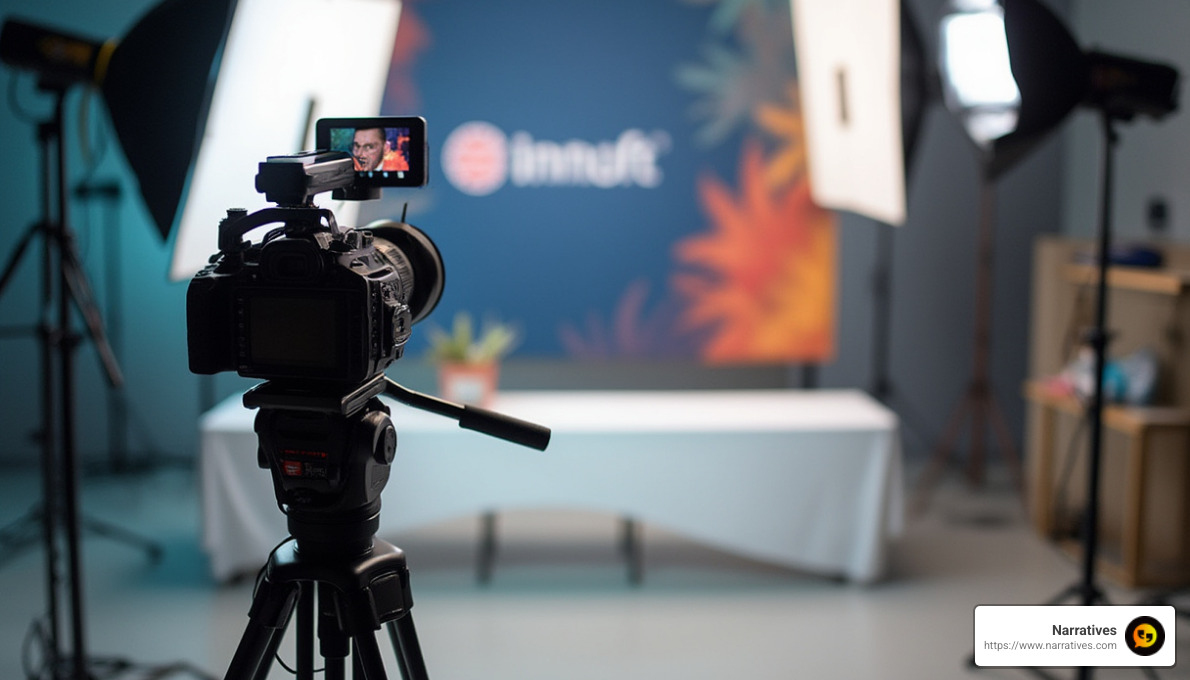Digital Storytelling Platforms: Your Gateway to Creative Narratives

Releaseing the Power of Digital Storytelling Platforms
Digital storytelling platform is much more than a buzzword—it's a tool that helps organizations craft compelling narratives that captivate and engage audiences. But what exactly is a digital storytelling platform, and why is it a game-changer for mission-driven brands?
A digital storytelling platform is a tool or software that enables you to create, publish, and share immersive and interactive stories online. Whether you're a non-profit marketing lead eager to amplify your mission, or a social impact organization looking to resonate better with your audience, these platforms can:
- Improve story engagement with multimedia content—using images, video, and audio to make your narrative come alive.
- Streamline content creation through intuitive interfaces, making it easier for teams with limited technical expertise.
- Broaden reach by crafting visually consistent stories optimized for every device, ensuring your message is accessible to a wider audience.
Digital storytelling allows communities to share their truth in engaging ways. As Nick Bennett from Honda put it, the goal is to take content lying in front of us and have it on the web in 15 minutes—a feat that digital storytelling platforms make simple and efficient.
If you're focused on creating content that resonates deeply and drives action within your community, diving into digital storytelling could be your next great step.

Understanding Digital Storytelling Platforms
Digital storytelling platforms are changing how we share narratives by combining interactive storytelling, multimedia content, and visual storytelling. These platforms are not just tools; they are gateways to more engaging and immersive experiences.
Interactive Storytelling
Interactive storytelling is at the heart of digital narratives. It allows readers to engage with content in a way that static stories can't. Think of it as a conversation rather than a monologue. Platforms like Narratives enable creators to layer information over various elements, inviting users to explore stories through clicks and scrolls. This interactive element makes stories more memorable and impactful.
Multimedia Content
Gone are the days when storytelling was limited to text. Digital storytelling platforms empower creators to weave together text, images, videos, and audio. This multimedia approach enriches the narrative, making it more dynamic and engaging. For example, Narratives offers tools that help users create visually stunning stories without needing a graphic design degree. By integrating various forms of media, these platforms help stories resonate on a deeper level.
Visual Storytelling
Visual storytelling is about using images and graphics to convey messages quickly and effectively. In today's world, visuals can capture attention and communicate complex ideas faster than words alone. Platforms like Narratives offer templates and design tools that make it easy for anyone to create professional-quality visuals. This democratization of design means that even small non-profits can create compelling visual stories that stand out.

These elements—interactivity, multimedia, and visual storytelling—combine to create a powerful tool for organizations. By leveraging these platforms, storytellers can craft narratives that not only inform but also inspire and mobilize their audiences. Whether you're telling the story of a community's resilience or highlighting a social issue, digital storytelling platforms make it possible to do so in a way that's more engaging and effective than ever before.
Top 5 Digital Storytelling Platforms for Non-Profits
Non-profits often have compelling stories to tell, from community successes to urgent social issues. Digital storytelling platforms can amplify these narratives, helping organizations reach and engage their audiences more effectively. Here are five top features that non-profits can leverage to tell their stories:
Enhanced Interactivity
Platforms that offer enhanced interactivity allow users to engage more deeply with the content. Features like clickable areas, hover effects, and interactive galleries can make stories more engaging and memorable.
Multimedia Integration
The ability to integrate various forms of media such as text, images, videos, and audio enriches the narrative, making it more dynamic and engaging. Platforms that provide easy multimedia integration are particularly valuable for non-profits looking to tell richer, more layered stories.
Visual Storytelling Tools
Visual storytelling tools that offer templates and design aids can help non-profits create professional-quality visuals. These tools are crucial for capturing attention and conveying complex ideas quickly and effectively.
Geographic Storytelling
For stories tied to specific locations, platforms that allow for geographic storytelling can be incredibly effective. These tools help illustrate the impact of a non-profit’s work across different regions, enhancing the narrative’s relevance and depth.
Timeline Features
Platforms that offer timeline features are ideal for showcasing the progression of events or the history of an initiative. These features help organize content chronologically, providing clear and compelling narratives about growth and impact.
By utilizing these features, non-profits can create narratives that not only inform but also inspire action and drive social change.
How to Choose the Right Digital Storytelling Platform
Selecting the ideal digital storytelling platform is crucial for crafting narratives that captivate and engage. Here are four key factors to consider:
User Experience
A seamless user experience is essential. The platform should be intuitive, allowing storytellers to focus on creativity rather than technical problems. Consider how easily users can steer the interface and access features. A platform with a user-friendly design can help you create stunning visuals without extensive training.
Scalability
As your storytelling needs grow, your platform should grow with you. Scalability ensures that you can handle increased content volume or more complex narratives over time. Look for platforms that offer flexible plans or features that can be expanded as your projects and audience expand.
Adaptability
Adaptability is about how well a platform can cater to different types of content and storytelling styles. Whether you’re creating a simple timeline or an interactive map, the platform should support various formats and media types. Versatility in storytelling allows stories to unfold in unique ways, adding layers of depth to your narrative.
Audience Engagement
Engaging your audience is the ultimate goal. Features that encourage interaction, such as animations or interactive elements, can significantly improve engagement. Unique storytelling methods can captivate audiences, particularly younger or educational audiences.
By focusing on these elements, you can choose a digital storytelling platform that not only meets your current needs but also supports future growth and creativity.
Enhancing Storytelling with Multimedia Tools
In the field of digital storytelling, multimedia tools are your best allies. They transform simple narratives into rich, engaging experiences. Let's explore how graphic design, data visualization, and animation can lift your storytelling.
Graphic Design
Graphic design is the backbone of visual storytelling. Tools like Canva offer beautiful templates and easy drag-and-drop features. This makes it simple for anyone to create professional-looking graphics, even without a design background. Consistent use of fonts, colors, and images helps to establish a recognizable brand identity across your stories.
Example: A non-profit might use Canva to create visually appealing social media posts that highlight their mission and impact. This consistent branding helps build trust and recognition with their audience.
Data Visualization
Data visualization turns complex data into understandable visuals. Piktochart is a fantastic tool for this purpose. It allows you to import data and create custom infographics that make your data-driven stories accessible and engaging.
Example: Consider a non-profit working on environmental conservation. They can use Piktochart to create infographics that display the effects of climate change. This makes the data more relatable and easier for the audience to grasp.

Animation
Animation adds life to your stories. It can illustrate concepts that are difficult to convey through static images or text alone. Simple animations, like those created with tools such as Toontastic 3D, can make your narrative more dynamic and engaging.
Example: During the COVID-19 pandemic, the UK's National Association of Head Teachers used simple animations to share educators' experiences. These animations brought personality and emotion to their story, making it more impactful.
By integrating these multimedia tools into your digital storytelling, you can create narratives that not only inform but also captivate and inspire your audience. This approach not only improves engagement but also amplifies your message, making your stories unforgettable.
Now, let's address some common questions about digital storytelling platforms.
Frequently Asked Questions about Digital Storytelling Platforms
What is a digital storytelling platform?
A digital storytelling platform is a tool that lets you create and share stories using interactive storytelling and multimedia content. These platforms allow you to combine text, images, videos, and animations to craft compelling narratives without needing to know how to code. They make it easy to present your story in a way that engages your audience across various devices.
How can non-profits benefit from digital storytelling?
Non-profits can greatly benefit from digital storytelling by using it as a medium for community-driven storytelling and creating social impact. By telling stories about their mission and the communities they serve, non-profits can raise awareness, build empathy, and inspire action.
- Community-driven storytelling allows non-profits to highlight the voices of those they help, making their stories more relatable and authentic.
- Social impact is amplified when these stories reach a wider audience, potentially increasing support and donations.
For example, the work of Pars Equality Center shows how storytelling can empower communities by sharing the challenges and triumphs of Persian-speaking immigrants. This approach not only educates the public but also builds a supportive network around the cause.
What are some free digital storytelling tools?
There are numerous free tools available that make content creation accessible to everyone. Here are a few options:
- ZooBurst: Create interactive 3D pop-up books that bring stories to life.
- StoryMap JS: Perfect for geographic storytelling, allowing you to add narrative layers to maps.
- Adobe Spark: Great for short, visually driven stories with ready-to-use images.
- Storybird: Turn curated artwork into visual stories that captivate readers.
- Timeline JS: Build interactive timelines with multimedia elements to tell chronological stories.
These tools empower users to craft engaging narratives without the need for advanced technical skills, making them ideal for non-profits and educators alike.
By leveraging these platforms, anyone can tell stories that resonate with their audience, fostering deeper connections and driving meaningful engagement.
Conclusion
At Narratives, we believe in the transformative power of storytelling to drive social impact and amplify underrepresented voices. Our mission is to partner with non-profits and purpose-driven organizations, helping them craft compelling narratives that inspire action and build trust.
Digital storytelling platforms are more than just tools. They are gateways that allow organizations to share their impact stories in a way that is both engaging and accessible. By using multimedia elements like video, images, and text, these platforms enable non-profits to connect with their audiences on a deeper level.
By focusing on community-driven storytelling, we help shine a light on the stories that matter. Whether it's highlighting the work of the Pars Equality Center or other non-profits, our goal is to create content that resonates emotionally and prompts positive change.
Underrepresented voices deserve to be heard. Through our work, we aim to lift these voices, ensuring they reach a broader audience. This not only educates but also fosters empathy and understanding, building a supportive network around each cause.
As we continue to explore the possibilities of digital storytelling, we remain committed to using these platforms to make a meaningful difference. Together, we can tell stories that change the world.


